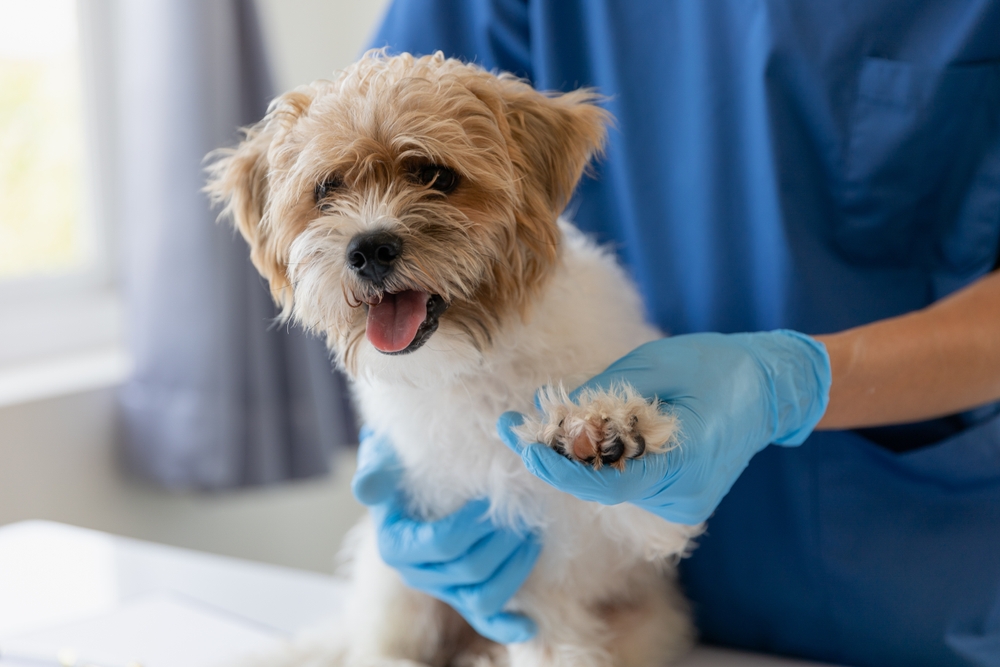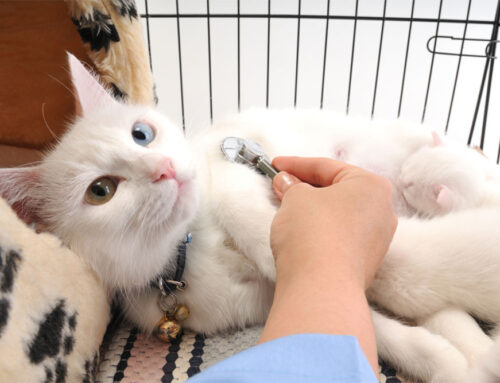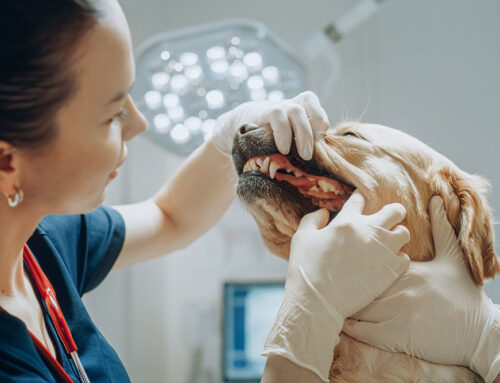Understanding the Risks of Foreign Object Ingestion in Pets
Hidden Dangers in Your Home and Yard
Pets are naturally curious, and their tendency to explore the world with their mouths puts them at risk of ingesting dangerous foreign objects. In Valley Center, California, where outdoor living, gardening, and hiking are common, additional hazards such as plant bulbs, garden chemicals, and natural debris increase the likelihood of ingestion-related emergencies.
Even household items, including coins, batteries, socks, bones, and small toys, pose a serious risk if swallowed. These objects can cause choking, intestinal blockages, chemical burns, and poisoning. Recognizing the dangers and taking preventative steps can help keep your pet safe.
Common Foreign Objects That Pets Swallow
Household Items to Watch Out For
- Toys & Small Objects – Rubber balls, stuffed animal parts, and children’s toys
- Bones & Food Scraps – Cooked bones, corn cobs, and fruit pits (avocado pits are especially dangerous)
- Clothing & Fabric – Socks, strings, and hair ties
- Coins & Batteries – Zinc toxicity and acid burns from battery leakage
- Garden Hazards – Oleander (toxic plant), fertilizers, and plant bulbs
- Human Medications – Over-the-counter and prescription drugs
Read more about gastrointestinal foreign bodies in small animals.
Signs and Symptoms of Foreign Object Ingestion
Foreign object ingestion may not always be immediately obvious. Symptoms can vary depending on the size, type, and location of the object.
Early Warning Signs:
- Vomiting (especially repeated or projectile vomiting)
- Diarrhea or constipation
- Loss of appetite
- Lethargy or weakness
- Excessive drooling
- Pawing at the mouth or gagging (if choking)
Signs of a Serious Obstruction:
- Bloated abdomen
- Straining to defecate with little or no stool
- Restlessness or discomfort
- Collapse or pale gums (a sign of internal bleeding, dehydration, or shock)
If you notice any of these signs, immediate veterinary attention is required.
Learn more about the symptoms of gastrointestinal obstruction in dogs.
What to Do If Your Pet Swallows a Foreign Object
1. Stay Calm and Assess the Situation
- If the object is visible in your pet’s mouth, DO NOT reach in unless it is easily removable.
- If your pet is choking, perform the Heimlich maneuver for pets (seek veterinary guidance first).
2. Do NOT Induce Vomiting
- Some objects, such as sharp items, batteries, or caustic substances, can cause more damage if vomited back up.
- Inducing vomiting should only be done under veterinary supervision.
3. Contact Your Veterinarian Immediately
- Provide details about what was swallowed, when, and any symptoms.
- If your pet is acting normal, your vet may recommend monitoring stool for 24-48 hours to see if the object passes naturally.
- If the object is large, sharp, or toxic, emergency medical intervention may be required.
Veterinary Diagnosis and Treatment Options
How Vets Diagnose Foreign Object Ingestion
Your veterinarian will use diagnostic imaging to determine whether the object is stuck, moving, or needs removal:
- X-Rays – Detects bones, metal objects, and some larger items
- Ultrasound – Identifies soft tissue objects like socks, hair ties, or rubber toys
- Endoscopy – A non-surgical method for retrieving objects from the stomach
- Blood Tests – Checks for signs of infection, dehydration, or toxicity
Learn about our diagnostic services at Valley Center Veterinary Clinic.
Treatment Options Based on Severity
- Induced Vomiting or Endoscopic Removal (if the object is still in the stomach)
- Fluids & Special Diets (to help smooth objects pass naturally)
- Surgery (Enterotomy or Gastrotomy) – If the object cannot pass on its own or has caused an obstruction
- Post-Operative Care – Includes pain management, restricted activity, and special diets to aid recovery

Preventing Foreign Object Ingestion in Pets
Simple Strategies to Keep Your Pet Safe
- Secure Trash Bins & Keep Food Out of Reach
- Use Pet-Safe Toys & Avoid Small or Easily Swallowed Objects
- Store Medications & Cleaning Supplies in Locked Cabinets
- Monitor Outdoor Spaces for Toxic Plants & Debris
- Supervise Pets During Play & Mealtime
Pet-Proofing Your Home
Regularly inspect your home for hazards, especially if you have a young, curious pet. Items that seem harmless to us can be life-threatening to them.
FAQs: Common Questions About Foreign Object Ingestion
1. Can I wait to see if my pet passes the object naturally?
Waiting is risky. Some objects won’t pass on their own and can cause blockages, bleeding, or internal damage. Always consult your vet.
2. How long does it take for an object to pass through a pet?
Typically, 24-48 hours, but larger or irregular-shaped objects can get stuck and require intervention.
3. What are signs that my pet needs emergency surgery?
- Severe vomiting or diarrhea
- Abdominal swelling or bloating
- Lack of bowel movements
- Lethargy or unresponsiveness
If your pet displays any of these symptoms, seek emergency care immediately.
Why Choose Valley Center Veterinary Clinic?
At Valley Center Veterinary Clinic, we provide:
- Advanced diagnostics & minimally invasive procedures
- Experienced veterinarians trained in emergency care
- Personalized treatment plans & post-surgical support
- Preventive education to keep your pet safe
Foreign object ingestion is one of the most common pet emergencies. By recognizing signs early, acting quickly, and taking preventative measures, you can protect your pet from serious complications.
Stay informed, stay vigilant, and keep your pet’s environment safe!







Leave A Comment